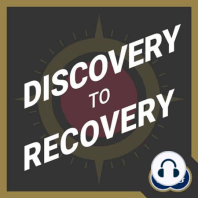44 min listen

47. Core Sensing Technology for Mineral Exploration and Mining - What, How and Why?
47. Core Sensing Technology for Mineral Exploration and Mining - What, How and Why?
ratings:
Length:
57 minutes
Released:
Feb 5, 2024
Format:
Podcast episode
Description
Drill core scanning technology is rapidly developing for use in exploration and mining. The future holds great promise if we can leverage all the data sets available from multiple sensors, but critical for success is understanding how the sensors and scanning systems work. What are the right questions to ask when picking our tools? Host Britt Bluemel, Global Business Development Manager for ALS Goldspot Discoveries, discusses three different types of sensors: hyperspectral for mineralogy, X-ray fluorescence (XRF) for elements and laser-induced breakdown spectroscopy (LIBS) for data at the level of atoms. Setting the scene in the first segment is Cari Deyell, Principal Spectral Geologist, Veracio. Cari takes us through the fundamentals of reflectance spectroscopy and builds out the case for mapping mineralogy from exploration through to mine development and ore body knowledge. The mineralogical data set provided by #spectroscopy can be enhanced when integrated with XRF and RGB photography. This integration will lead to fundamental advances in how we understand and mine ore bodies. Our next story focuses on the benefits of using XRF scanners on drill core with Michelle Legat, Vice President at GeologicAI. Scanning up to 650m per day, they are able to map the elements present and correlate with grades and minerals. Good data from any system is important and Michelle addresses key parts of the data collection process, to ensure that you get the best possible result. Acquiring XRF data also means a better understanding of mobile and immobile elements, supporting lithogeochemistry and produces some exciting results for exploration programs. François Doucet founder and CEO of Elemission, joins Britt for the last conversation and takes us through the background of LIBS and how it relates to other well-known geochemical analysis. Francois tells the story of the ground breaking moment of Curiosity landing on Mars in 1999 to the founding of Elemission, applying LIBS to the mapping of drill core. Scanning rates are dependent on the grain size of the minerals, with adjustments to higher speeds for pegmatites and coarse-grained rock. A breakthrough technology that takes the mapping of core down to the level of atoms. Next week Britt will be back to explore how to handle the volumes of data generated by core scanning systems for use in all parts of the mining value chain. Our theme music is Confluence by Eastwinds.
Released:
Feb 5, 2024
Format:
Podcast episode
Titles in the series (50)
Episode 3: Geoscience Goes Digital by Discovery to Recovery